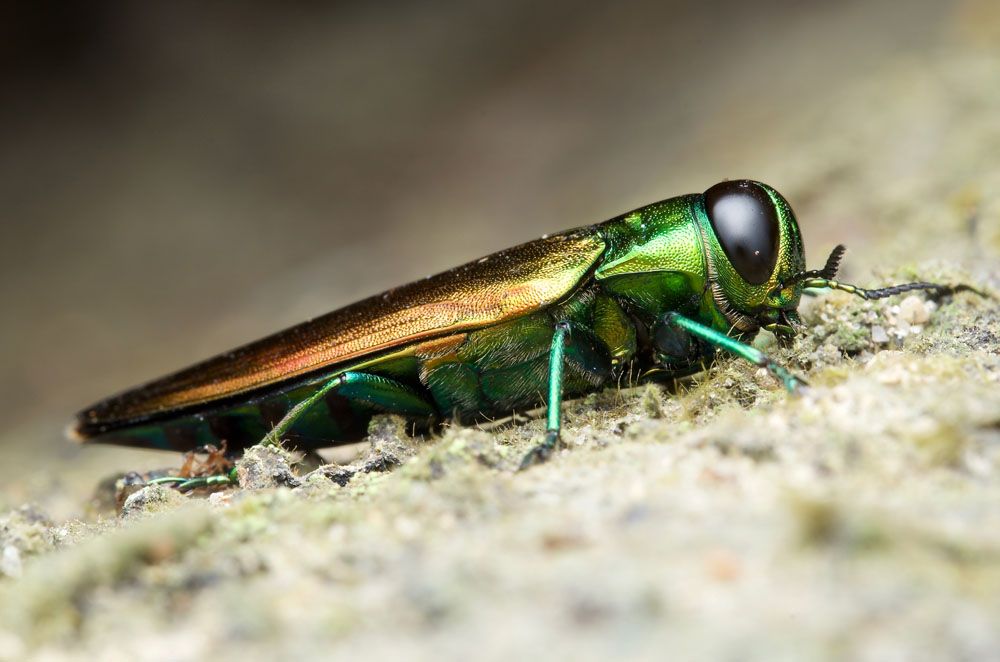
Emerald Ash Borer – Agrilus planipennis
Emerald Ash Borer (Agrilus planipennis)
Latin Name: Agrilus planipennis
Common Name: Emerald Ash Borer
Appearance:
- Adult emerald ash borer insects have flat heads, huge black eyes, and dark metallic-green bodies that are bullet-shaped. They have a length of 12 mm and a width of 3 mm.
- The larvae of the emerald ash borer have a cream-colored body with a flat, wide, segmented shape. The larvae bore through the bark of ash trees and fed beneath the bark for several weeks, creating distinctive S-shaped tunnels.
- Pupation takes place in the spring. Trees normally start to die back from the top of the canopy, and symptoms proceed downward, eventually leading to the tree’s death, which occurs in 2–4 years.
